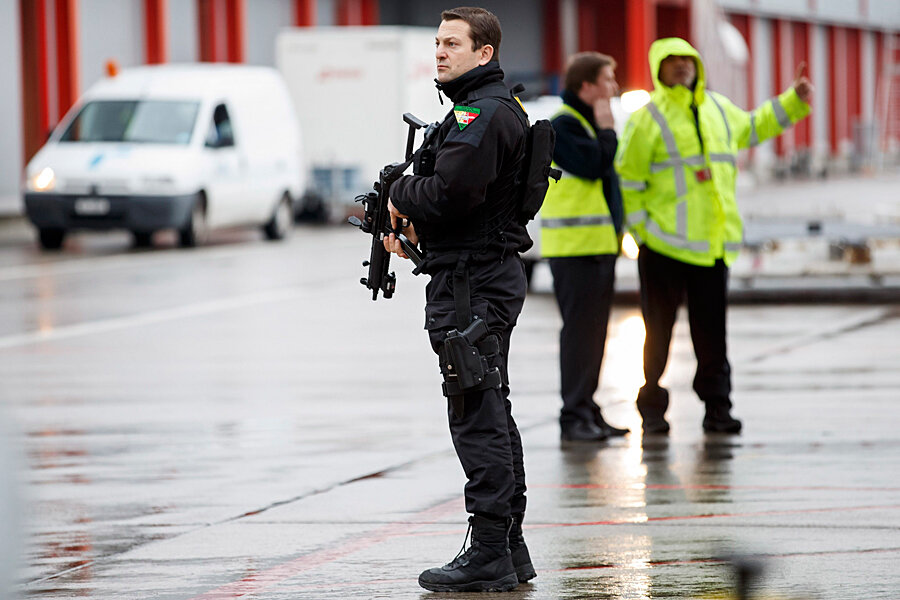Alleged Syrian detainee torture photos called a 'smoking gun'
Loading...
A daily update on terrorism and security issues
A team of former war crimes prosecutors claim to have found a “smoking gun” that proves that the regime of Syrian President Bashar al-Assad tortured and killed its opponents.
In a report released Monday to the Guardian and CNN, the prosecutors said they found “direct evidence” of “systematic torture and killing,” based on the analysis of over 26,000 images smuggled out of Syria by a defector who says he was a military police photographer.
The pictures show thousands of dead prisoners, many of whom appeared to be emaciated, strangled, or beaten.
Among the authors of the report were three former chief prosecutors for the Sierra Leone and former Yugoslavia tribunals, and forensic and digital imagery experts. The team was commissioned by a London law firm that was in turn hired by the government of Qatar, a sponsor of the Syrian opposition, according to the report’s authors.
The chairman of the panel and prosecutor of former Liberian President Charles Taylor, Sir Desmond de Silva, told CNN’s Christiane Amanpour that the work of the panelists was impartial, despite the funding.
"Ultimately, the validity of our conclusions turn on the integrity of the people involved," he said. "We, the team, were very conscious of the fact there are competing interests in the Syrian crisis – both national and international. We were very conscious of that."
"We approached our task with a certain amount of skepticism, bearing that in mind."
The man who provided the pictures is identified by the pseudonym Caesar. The Guardian reports that Caesar “smuggled the images out of the country on memory sticks to a contact in the Syrian National Movement.”
The anonymity “reminded some skeptics of Curveball, the code name assigned to the Iraqi defector Rafid Ahmed Alwan al-Janabi, whose bogus claims about mobile biological weapons labs formed a central part of the case for the American invasion of Iraq,” the New York Times reports.
“In 2011, just before the first street protests against President Assad’s Baathist dynasty, Mr. Janabi admitted to The Guardian that he had lied to German and American intelligence officials.”
CNN said it could not independently verify the authenticity of the photographs, but relied on the conclusions of the team behind it.
"This is a smoking gun," David Crane, one of the report's authors, and the former chief prosecutor for the Special Court for Sierra Leone told CNN. "Any prosecutor would like this kind of evidence – the photos and the process. This is direct evidence of the regime's killing machine."
Human Rights Watch separately criticized the international community’s response to Syria today, saying in a report that “the desire to bring President Bashar al-Assad’s government to the negotiating table should not become a pretext for failing to protect civilians caught up in the almost three-year civil war that has claimed more than 100,000 lives,” according to the NY Times.
As the Geneva II peace talks begin, with uncertain prospects of success, they shouldn’t become the latest excuse to avoid action to protect Syrian civilians,” Kenneth Roth, the executive director of Human Rights Watch, which has its headquarters in New York, said in a statement. “This requires real pressure to stop the killing and allow the delivery of the humanitarian aid they need to survive.
The two reports come just before the start of international negotiations on Syria, known as Geneva II, begin in Switzerland. As The Christian Science Monitor reported yesterday, the process of determining which parties will be included in diplomatic negotiations has been a fraught one.
Getting the Syrian opposition to the table was a tremendous challenge, and they only voted Saturday to attend the talks in Geneva, known as Geneva II.
The last minute invitation and subsequent withdrawal of an invitation for Iran to participate in the talks added last-minute drama.
Iran has been one of the Syrian regime's most crucial backers, and is believed to be offering support in the form of weapons, money, and even fighters on the ground. It is also a backer of Hezbollah, the Lebanese Shiite militant organization that has openly sent thousands of fighters across the border to fight alongside regime forces.
But it will also be a crucial player in any lasting Syria agreement, many observers would argue.






